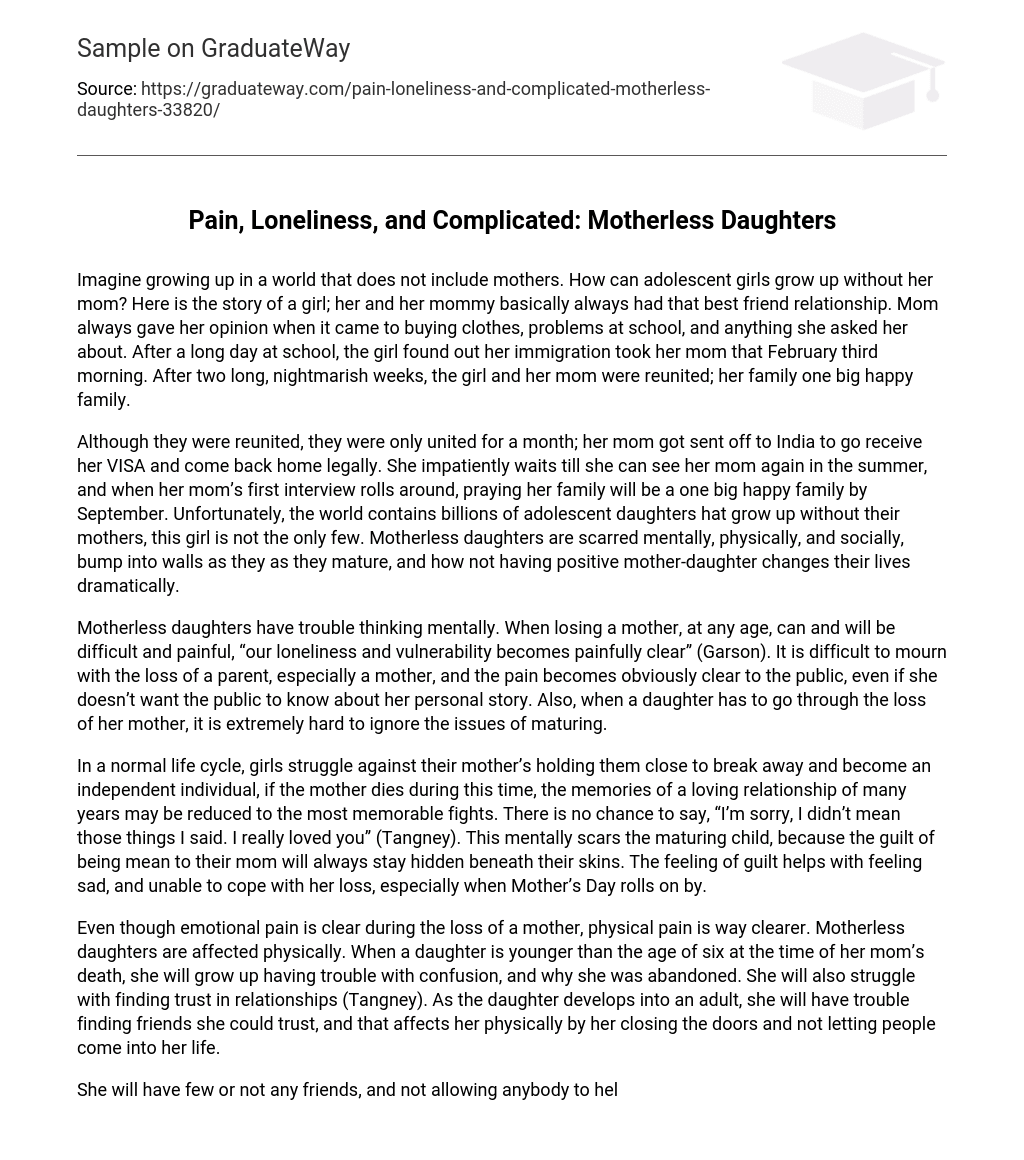Imagine growing up without a mother. How can adolescent girls navigate their journey to adulthood without maternal guidance? Let me share the story of a girl who had an incredibly close bond with her mother; they were not only family, but also best friends. Her mother provided advice on clothes, school problems, and anything else she sought guidance on. One day, after a tiring day at school, the girl discovered that her mother had been taken away due to immigration issues. The following two weeks brought anxiety and nightmares as the girl was separated from her beloved mother. However, after this challenging period, they were joyfully reunited, making their family complete once again.
Although they were reunited, they were only united for a month. Her mom got sent off to India to go receive her VISA and come back home legally. She impatiently waits till she can see her mom again in the summer. When her mom’s first interview rolls around, she prays that her family will be one big happy family by September. Unfortunately, the world contains billions of adolescent daughters who grow up without their mothers, and this girl is not one of the few. Motherless daughters are scarred mentally, physically, and socially. They bump into walls as they mature and not having positive mother-daughter relationships changes their lives dramatically.
Motherless daughters, regardless of their age, face cognitive challenges. The process of grieving for a parent, particularly a mother, is undeniably difficult and painful, revealing our profound sense of isolation and vulnerability (Garson). Even if a daughter desires to keep her personal narrative private, the anguish caused by the loss becomes evident to others. Furthermore, when a daughter experiences the death of her mother, it becomes increasingly arduous to disregard the complexities associated with maturing.
Girls often struggle to break away from their mothers and establish their independence during the normal course of life. However, if a mother were to pass away during this crucial time, the cherished memories of their loving relationship could be overshadowed by the most memorable arguments. Regretfully, there would be no opportunity to apologize and express true feelings of love for the mother. This can leave a lasting emotional scar on the maturing child, as the guilt of treating their mother poorly remains hidden deep within. The resulting guilt contributes to feelings of sadness and an inability to cope with the loss, especially when Mother’s Day comes around.
The physical pain caused by the loss of a mother is more pronounced despite the emotional pain experienced. Daughters also face physical effects when their mother is absent. If a daughter is under six years old at the time of her mother’s death, she will have difficulty comprehending why she was left and will struggle to build trusting relationships (Tangney). These difficulties persist into adulthood, making it challenging for her to find reliable friends and resulting in physical implications such as isolating herself from others and shutting off opportunities for new connections.
Having few or no friends and not allowing anyone to help can negatively impact a girl’s academic performance and lifestyle. According to Miller, if a girl hates her body or is unsure about her femininity, experiences abandonment or anger issues, and faces social stress, it can harm her relationships. This may result in her becoming invisible or craving attention. Consequently, the daughter may struggle to communicate with others and resort to self-harm. However, if these motherless daughters had a positive relationship with a maternal figure, their lives could be transformed.
Positive mother-daughter relationships have a significant impact on the life choices of daughters. Even motherless daughters can experience the positive effects if they have a strong bond with a mother figure. According to Campbell, 88 percent of adults acknowledge that their mothers have influenced them positively. When motherless daughters find someone who resembles a mother figure, such as their father, aunts, or a friend’s mom, they are less likely to make negative choices like becoming teen parents, acquiring STDs, or developing addictions to drugs and alcohol. It is crucial for a healthy attachment between a mother and daughter to be established, as it helps prevent unhealthy relationships with people and substance abuse in the future, as mentioned by Mayeda. Teenage girls often make mistakes that can adversely affect their lives. However, having a special bond with someone resembling a mother figure can brighten their futures and lead them to positive paths. Additionally, fostering a positive mother-daughter relationship aids in building relationships with other individuals.
When girls lack the support of a mother, it profoundly impacts the course of their lives. Without this support, they often struggle to express their emotions and feel confined, longing to break free. Reflecting on the girl mentioned in the story, that girl is none other than myself.
Work Cited:
Campbell, Susan. “The Mother-Daughter Bond | Psychology Today.” Psychology Today: Health, Help, Happiness + Find a Therapist. 01 May 2001. Web. 03 May 2010. [link]
Garson, Marc. “Motherless: A Therapist’s Comments on Grief, Guilt and Anger. Whole Family. November 23, 2006, April 16, 2010. [link]
Mayeda, Shannon. “Nurturer, Deserter or Enemy: Mother-Daughter Relationships and Substance Abuse.” Www.counselormagizine.com. Dec. 2005. Web. 22 Apr. 2010. [link]
Miller, Carna. “Article: How It Works – Missingmother.com.” HOME – Missingmother.com. Web. 20 Apr. 2010. [link]
Tangney, Paige. “Motherless Daughter and Motherless Daughters Motherless Child–Motherless on Mother’s Day-Seattle King County WA Washington State.” Www.counselingseattle.com. 2005.Web. 23 Apr. 2010. [link]





